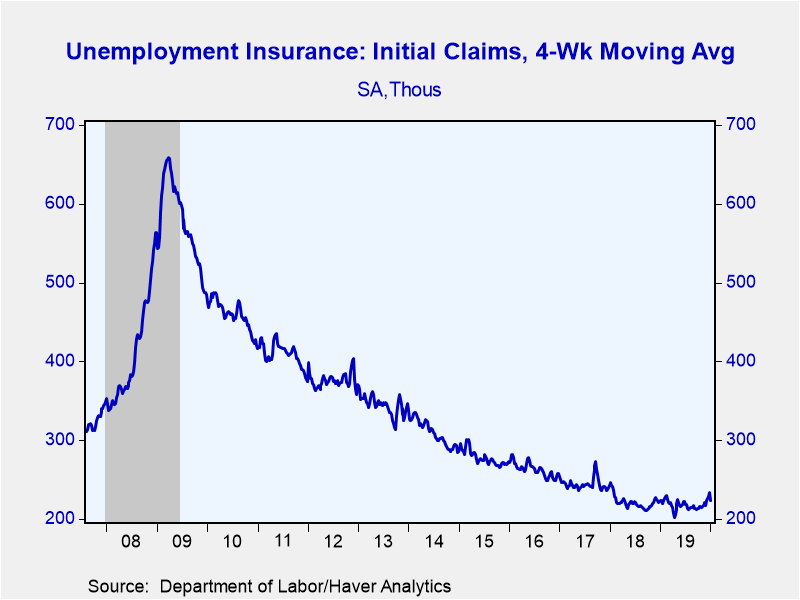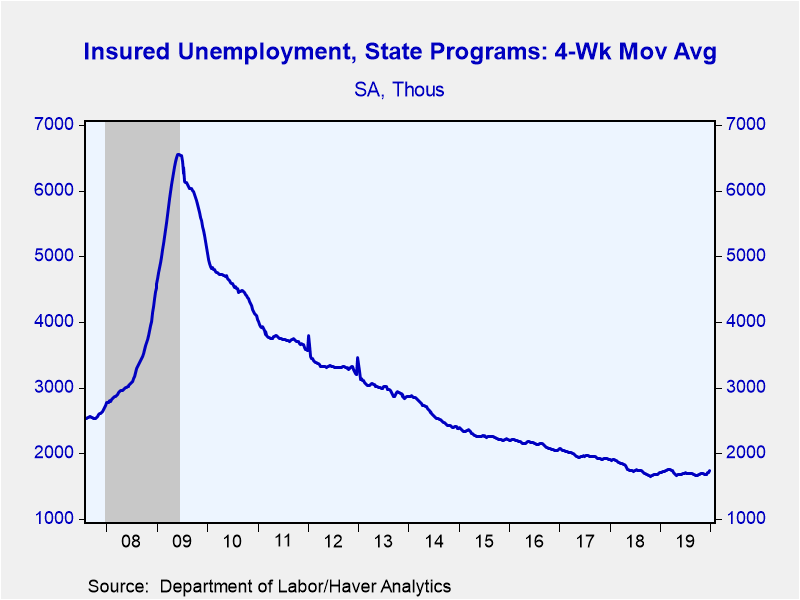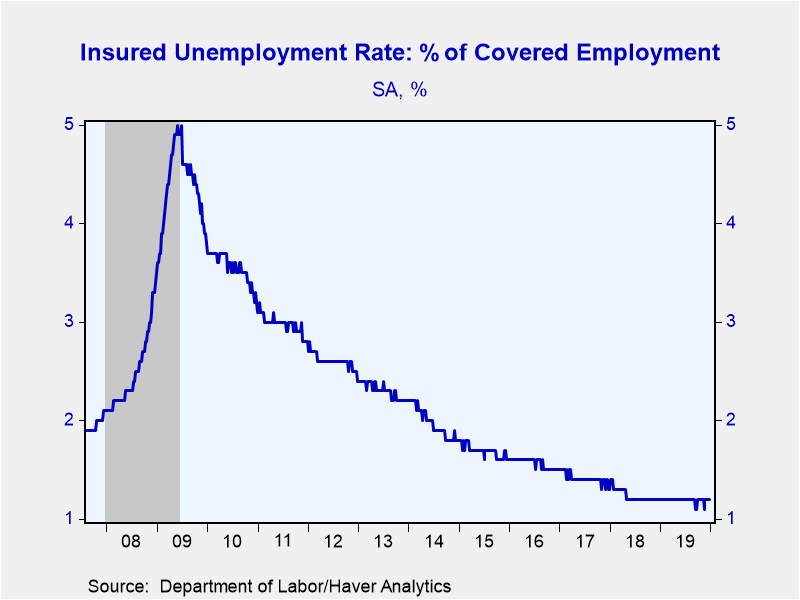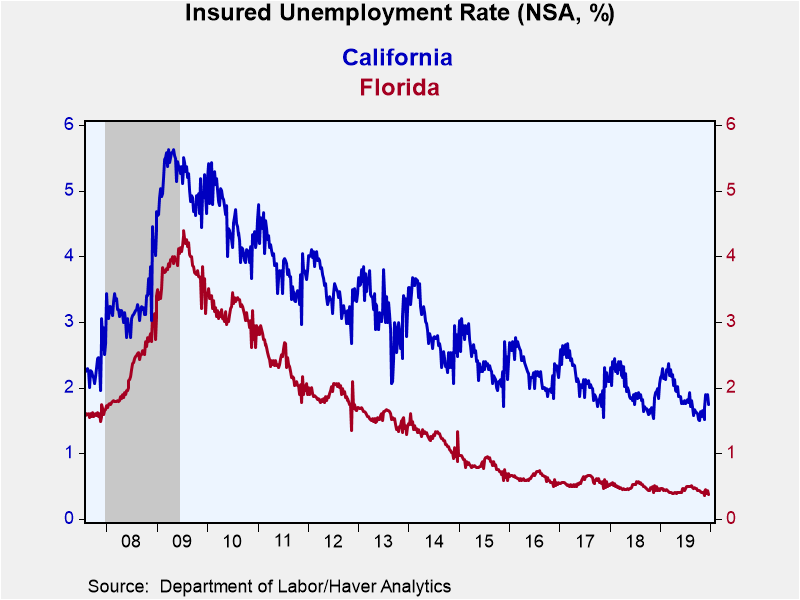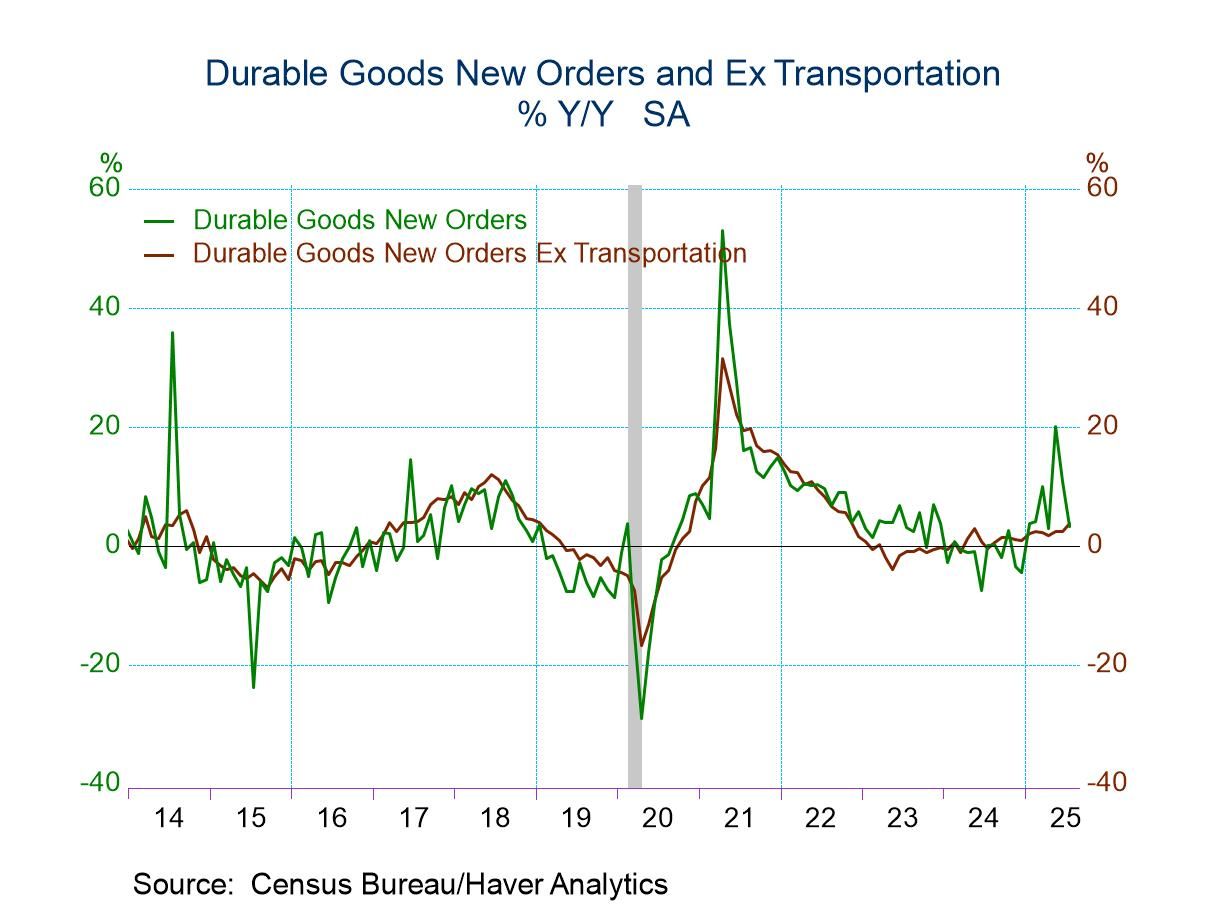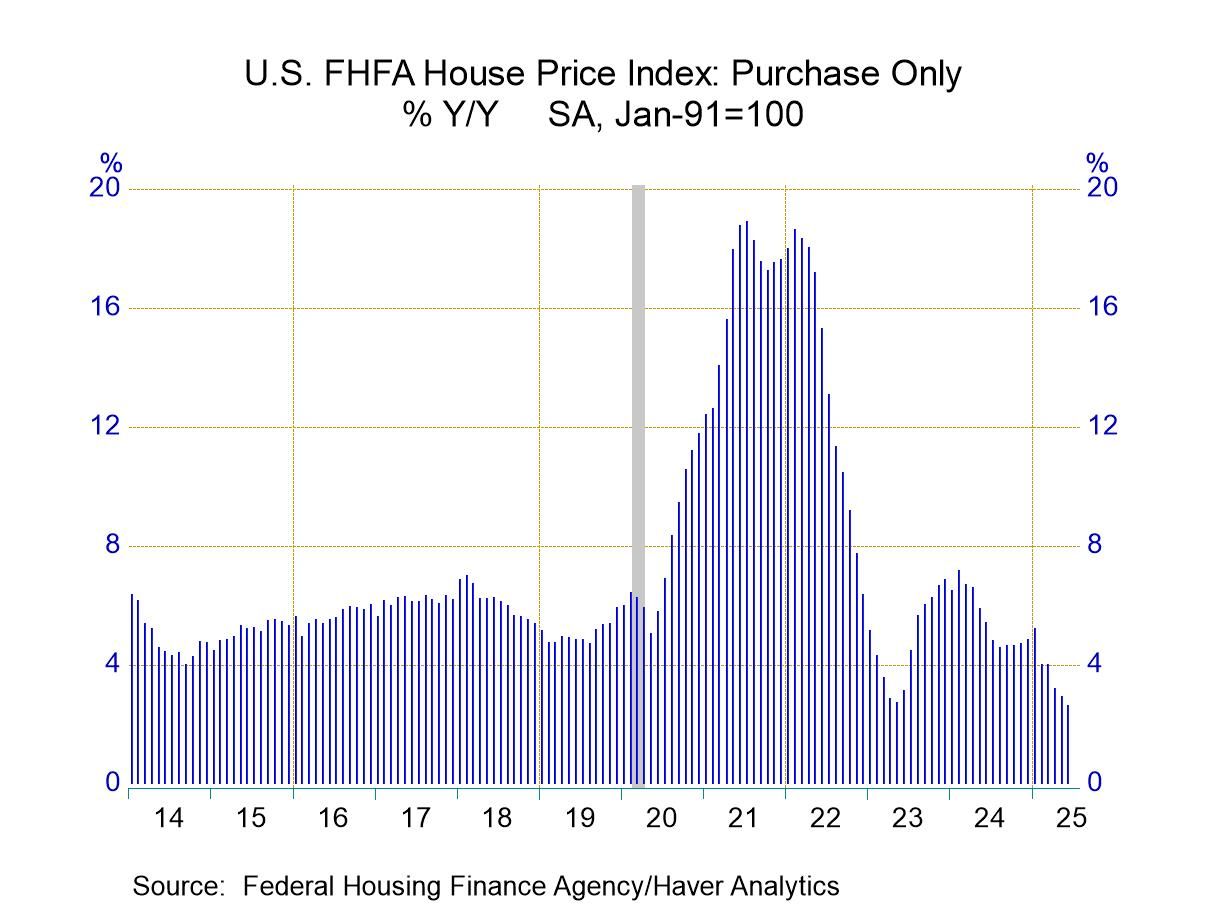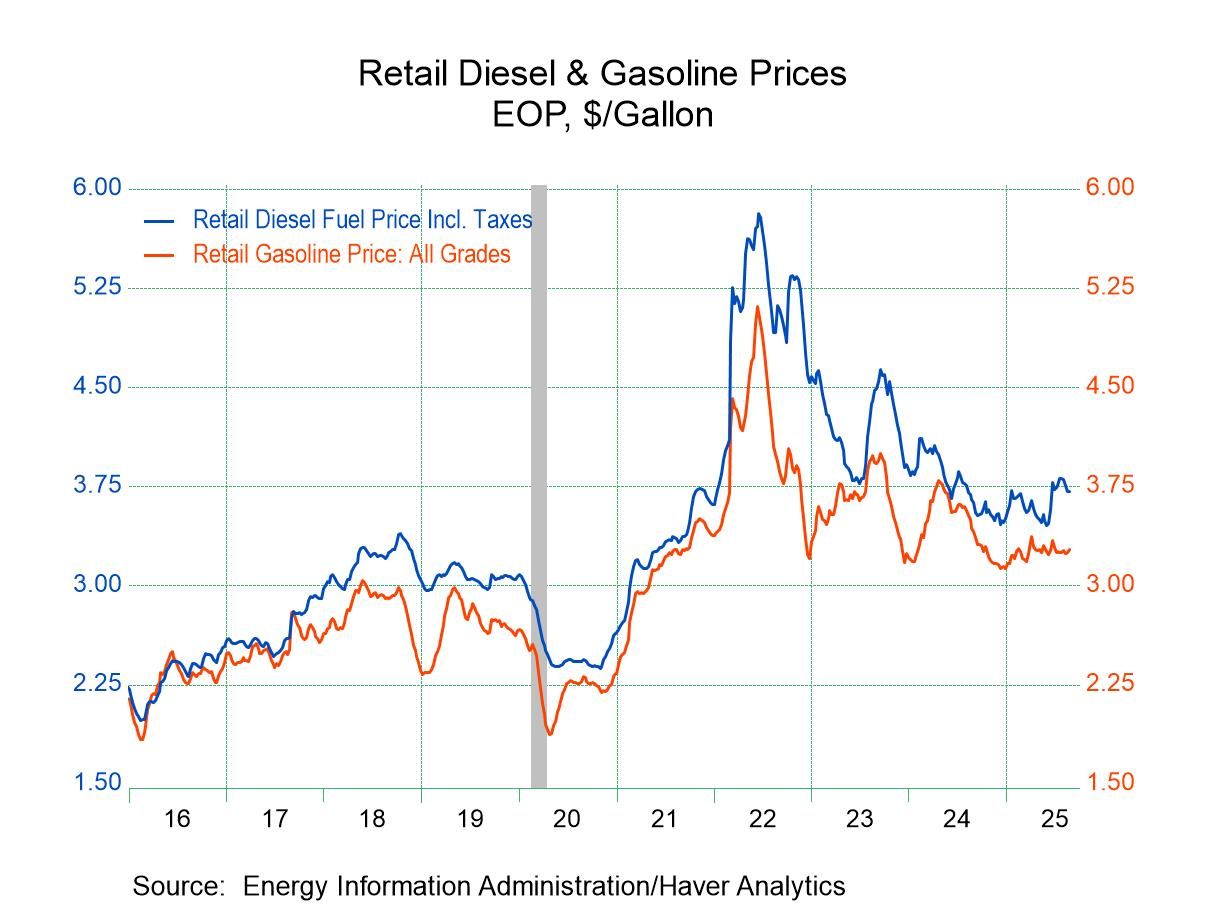 Global| Jan 09 2020
Global| Jan 09 2020U.S. Initial Applications for Unemployment Insurance Ease, But Continuing Claims Surge
by:Tom Moeller
|in:Economy in Brief
Summary
The latest readings of labor market conditions were mixed. Initial claims for jobless insurance declined 9,000 to 214,000 (-3.2% y/y) in the week ended January 4 from 223,000 in the prior week, revised from 222,000. It was the fourth [...]
The latest readings of labor market conditions were mixed. Initial claims for jobless insurance declined 9,000 to 214,000 (-3.2% y/y) in the week ended January 4 from 223,000 in the prior week, revised from 222,000. It was the fourth straight weekly decline. The Action Economics Forecast Survey expected 220,000 initial claims. The four-week moving average of initial claims declined to 224,000 from 233,500.
Continuing claims for unemployment insurance in the week ended December 28 increased 75,000 to 1.803 million (5.6% y/y) from the prior week's unrevised 1.728 million. The four-week moving average of claimants rose to 1.745 million, the highest level since late-March.
The insured rate of unemployment held at 1.2% where it has been for six weeks.
Insured unemployment rates continued to vary widely by state. During the week ending December 21, the lowest rates were in Florida (0.37%), Nebraska (0.39%), North Carolina (0.45%), Virginia (0.51%) and Tennessee (0.54%). The highest rates were in Montana (1.96%), Pennsylvania (2.03%), West Virginia (2.09%), New Jersey (2.23%), and Alaska (2.83%). Among the other largest states by population, the rate was 0.98% in Texas, 1.51% in New York and 1.75% in California. These state data are not seasonally adjusted.
Data on weekly unemployment claims dating back to 1967 are contained in Haver's WEEKLY database, and they are summarized monthly in USECON. Data for individual states are in REGIONW. The expectations figure is from the Action Economics Forecast Survey, carried in the AS1REPNA database.
The Economic Outlook and Monetary is the title of today's speech by Fed Vice Chair Richard H. Clarida and it is available here.
| Unemployment Insurance (SA, 000s) | 01/04/20 | 12/28/19 | 12/21/19 | Y/Y % | 2019 | 2018 | 2017 |
|---|---|---|---|---|---|---|---|
| Initial Claims | 214 | 223 | 224 | -3.2 | 218 | 220 | 244 |
| Continuing Claims | -- | 1,803 | 1,728 | 5.6 | 1,700 | 1,756 | 1,961 |
| Insured Unemployment Rate (%) | -- | 1.2 | 1.2 |
1.2 |
1.2 | 1.2 | 1.4 |
Tom Moeller
AuthorMore in Author Profile »Prior to joining Haver Analytics in 2000, Mr. Moeller worked as the Economist at Chancellor Capital Management from 1985 to 1999. There, he developed comprehensive economic forecasts and interpreted economic data for equity and fixed income portfolio managers. Also at Chancellor, Mr. Moeller worked as an equity analyst and was responsible for researching and rating companies in the economically sensitive automobile and housing industries for investment in Chancellor’s equity portfolio. Prior to joining Chancellor, Mr. Moeller was an Economist at Citibank from 1979 to 1984. He also analyzed pricing behavior in the metals industry for the Council on Wage and Price Stability in Washington, D.C. In 1999, Mr. Moeller received the award for most accurate forecast from the Forecasters' Club of New York. From 1990 to 1992 he was President of the New York Association for Business Economists. Mr. Moeller earned an M.B.A. in Finance from Fordham University, where he graduated in 1987. He holds a Bachelor of Arts in Economics from George Washington University.


